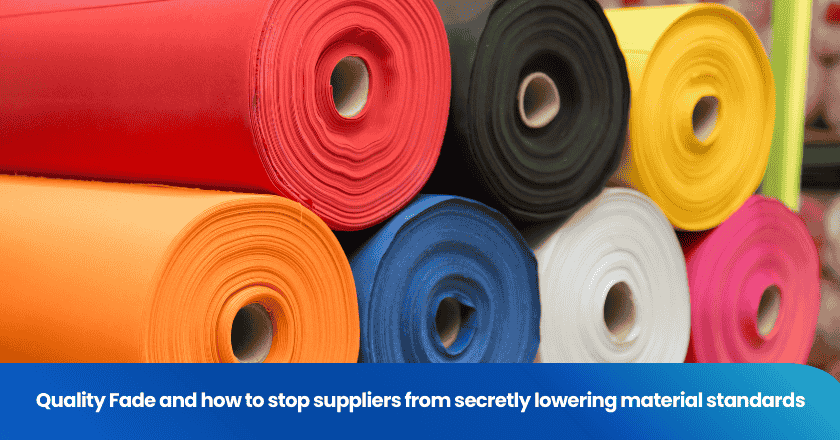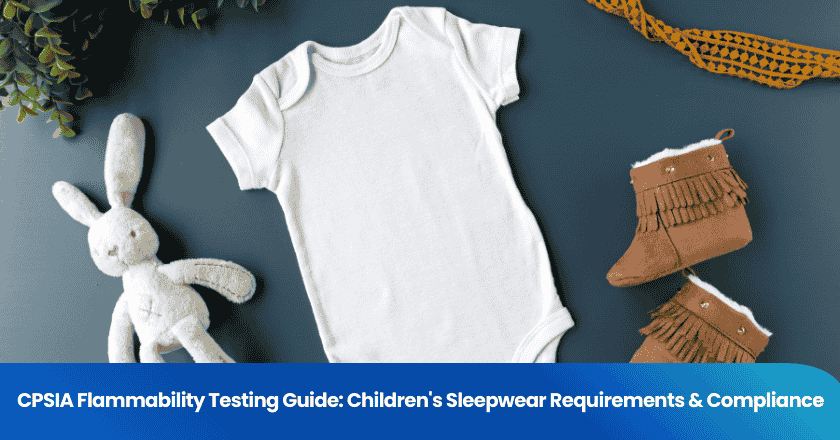
AQL stands as a statistical method that sets the maximum number of defects you can accept in a production batch for quality control. You use quality aql to establish clear, quantitative standards during inspections, which ensures both buyers and suppliers understand defect limits.
- AQL offers a systematic approach that reflects long-term process quality.
- You gain a reliable reference for managing defects and reducing risks in your products.
Key Takeaways
- AQL helps set clear limits on defects in products, ensuring quality control during inspections.
- Using AQL reduces the risk of accepting faulty products, protecting your business and customer trust.
- Different types of defects exist: critical, major, and minor. Each type affects whether you accept or reject a batch.
- AQL tables guide you in determining how many units to inspect and the maximum defects allowed.
- Regular training and clear communication with suppliers improve the effectiveness of AQL in quality control.
What Is AQL?
Acceptable Quality Level Explained
You use the acceptable quality level to set clear boundaries for defects in your product inspection process. This standard defines the maximum number of defective units you can accept in a batch before you must reject it. You rely on quality aql to guide your decisions during quality control, ensuring you maintain consistent standards across all production lots.
When you conduct an inspection, you follow a systematic approach:
- You determine the total number of units in the batch.
- You select the inspection level, which sets how strict your evaluation will be.
- You use a table to find the sample size and the maximum number of defects allowed.
Here is a simple breakdown of how you calculate the acceptable quality level during product inspection:
| Step | Description |
|---|---|
| 1 | Select the row with the number of units (Lot Size) from the first table. |
| 2 | Choose the General Inspection Level, which determines the stringency of the inspection. |
| 3 | Use the results to determine the maximum number of faulty units allowed based on the selected AQL level. |
You inspect the sample and count the number of defective pieces. If the number of defects stays within the acceptance quality limit, you accept the batch. If the number exceeds the limit, you reject the entire lot. This process helps you make objective decisions and reduces the risk of passing poor-quality products.
Tip: Always check both minor and major defects separately. Minor defects may not affect function, but major defects can impact safety or usability.
AQL as a Statistical Standard
You base your decisions on aql using statistical principles. The ANSI/ASQ Z1.4 standard provides a framework for quality control that relies on attribute sampling. You evaluate each item in your sample as either acceptable or defective, which simplifies your analysis.
You must select a sample size that represents the entire batch. Random selection ensures you avoid bias and maintain statistical validity. Before you start, you set your acceptable quality levels and tolerable error rates. This preparation allows you to make informed decisions and maintain consistent quality standards.
Here is a summary of the statistical principles behind aql:
| Evidence | Description |
|---|---|
| Statistical basis | ANSI/ASQ Z1.4 is grounded in statistical principles, providing a sound foundation for making informed decisions based on sample data. |
| Attribute Sampling | The foundation of attribute sampling rests on binary outcomes – an item either possesses or lacks a specific characteristic. |
| Sample Size | The sample size must be statistically significant to represent the entire population accurately. Random selection ensures unbiased results. |
| Statistical Validity | Organizations must determine acceptable quality levels (AQL) and tolerable error rates before implementing sampling plans. |
- You use the ANSI/ASQ Z1.4 standard to guide your sampling plan.
- You rely on binary outcomes to simplify your decision-making.
- You select a statistically significant sample size and use random selection.
- You establish your acceptable quality levels before you begin.
By following these principles, you ensure your product inspection process remains fair, reliable, and effective. You protect your business from costly mistakes and maintain customer trust.
Why Quality AQL Matters
Who Uses AQL
You encounter aql across many roles in the supply chain. Suppliers, manufacturers, and third-party inspectors all rely on aql to maintain consistent standards during product inspection. Each group plays a distinct part in the process:
| Role | Responsibilities |
|---|---|
| Suppliers | Take corrective actions if defects exceed the acceptance quality limit, such as reworking or sorting defective units. |
| Manufacturers | Follow aql standards during production to ensure quality aql levels are met before inspection. |
| Third-party Inspectors | Conduct inspections based on aql to determine if shipments meet quality control standards and report findings. |
You use aql to set clear thresholds for accepting or rejecting shipments. This approach reduces subjective decisions and helps you inspect a representative sample rather than every unit. You save time and resources while maintaining high standards. Aql also improves communication between buyers and suppliers, making expectations transparent.
Benefits for Quality Control
You gain several advantages when you apply aql in your quality control process. Aql measures the threshold of defect tolerance, allowing you to assess the quality of a batch without inspecting every item. This method helps you minimize undetected defects, which can lead to costly product recalls and damage customer trust.
- You reduce the risk of product recalls by maintaining strict aql standards.
- You experience fewer returns and refunds, which protects your reputation.
- You see fewer negative reviews, leading to higher customer satisfaction.
Aql offers clear benefits compared to visual inspection alone:
| Advantage | AQL | Visual Inspection |
|---|---|---|
| Cost Efficiency | Requires fewer resources | More resources needed |
| Time Saving | Quick turnaround for orders | Slower process |
| Statistical Reliability | Provides reliable assessment | Less statistical basis |
You rely on aql to make objective decisions and maintain consistent product quality. By using the acceptance quality limit, you protect your business from unnecessary risks and build stronger relationships with your customers.
Acceptance Quality Limit in Inspections
Types of Defects
You encounter three main types of defects during product inspection: critical, major, and minor. Each type affects your decision to accept or reject a batch. You must identify and classify these defects to maintain consistent quality control.
| Type of Defect | Definition | Example |
|---|---|---|
| Critical | No acceptable defects; poses significant safety risks. | Incorrect sizing, hazardous materials, faulty construction. |
| Major | Defects that affect appearance or function. | Misaligned seams, broken zippers, fabric damage. |
| Minor | Small issues that do not affect usability. | Small loose threads, slight color variation, minor stitching irregularities. |
You reject any batch with critical defects immediately. Major defects often lead to rejection if they exceed the acceptance quality limit. Minor defects may be tolerated within a limited quantity, depending on your quality aql standards.
Note: You must pay close attention to critical defects, such as sharp metal fragments in food packaging, since these pose serious risks. Major defects, like misaligned seams on clothing, affect usability and appearance. Minor defects, such as slight smudging on printed logos, usually do not impact performance.
Sampling and AQL Tables
You use a sampling standard to determine how many units to inspect from a batch. The aql table guides you through this process, helping you set clear acceptance criteria. You follow these steps:
1. Identify the batch size for your product inspection.
2. Select the appropriate aql level based on your industry and customer expectations.
3. Refer to the aql table to find the sample size and acceptance number for defects.
4. Gather your sample and inspect each unit.
5. Tally the defects and compare them to the acceptance criteria.
| Component | Description |
|---|---|
| Lot Size | The total number of units in a production batch. |
| Inspection Levels | Labeled as I, II, or III, determining the relationship between lot size and sample size. |
| AQL Values | The acceptable quality levels, usually expressed as percentages. |
| Sample Size Code Letters | Corresponding to specific sample sizes. |
| Acceptance Numbers | Criteria for lot acceptance or rejection. |
You rely on aql tables to make objective decisions. If the number of defects in your sample stays within the acceptance quality limit, you accept the batch. If the defects exceed the limit, you reject it. This process ensures your quality control remains consistent and efficient.
Using AQL in Practice
Setting AQL Levels
You start by setting the right aql level for your product inspection. This process ensures your quality control matches both product risk and customer expectations. Follow these steps for effective aql level setting:
1. Select an inspection level based on how critical the product is and what your customer requires.
2. Locate your lot size in the aql table.
3. Find the sample size code letter that matches your lot size and inspection level.
4. Determine the sample size and acceptance limits using the code letter.
5. Conduct your inspection using the chosen sample size.
6. Compare the number of defects found with the acceptance criteria to decide if you accept or reject the batch.
You must consider several factors during aql level setting:
- Product criticality: More critical products need lower aql values.
- Customer requirements: Some customers specify their required aql.
- Production capability: Your process must support the chosen aql.
- Cost considerations: Lower aqls mean more inspection and higher costs.
Industry standards also influence your choices. For example, medical devices and automotive parts require stricter aql levels than clothing or electronics.
| Industry/Product Type | AQL Level (Major Defects) | AQL Level (Minor Defects) |
|---|---|---|
| Medical Devices | 0.65 | 1.0 |
| Automotive | 0.65 | 1.0 |
| Consumer Electronics | 2.5 | 4.0 |
| Clothing | 2.5 | 4.0 |
Interpreting Results
You interpret aql results by understanding your product’s risk level and assessing production consistency. You must also consider regulatory requirements and customer expectations. Adjust your inspection rigor based on supplier performance and the impact on cost and quality. Accurate interpretation helps you maintain consistent standards and avoid costly mistakes.
Tip: Misinterpreting aql can lead to accepting batches with too many defects. This damages customer trust and increases returns.
Accept or Reject Decisions
You make accept or reject decisions by comparing your inspection findings to the acceptance criteria. Use the following table to guide your decision:
| Criteria | Description |
|---|---|
| Lot Size | Total number of units in the batch. |
| Inspection Levels | I, II, or III, which affect sample size. |
| AQL Values | The set quality aql levels for your product. |
| Acceptance Number (Ac) | Maximum defects allowed to accept the batch. |
| Rejection Number (Re) | Minimum defects that require batch rejection. |
For example, if you inspect a batch and find more defects than the acceptance number, you must reject the lot. Common scenarios include:
| Defect Type | AQL Level | Acceptable Defects | Rejection Threshold |
|---|---|---|---|
| Critical Defects | 0.1% | 0 | 1 |
| Major Defects | 1.5% | 7 | 8 |
| Minor Defects | 4.0% | 14 | 15 |
You protect your business by following these steps and making decisions based on clear data. Consistent use of aql in product inspection builds customer confidence and strengthens your quality control process.
AQL Limitations and Best Practices
Common Challenges
You face several challenges when you rely solely on aql for product inspection. Manual inspection processes often slow down production, which can delay shipments and affect your ability to meet market demands. As your production volume grows, hiring and training enough qualified inspectors becomes difficult. Rushed inspections may allow defective products to reach customers. Human error also poses a risk, especially during manual data entry. Incorrect records can compromise product safety and compliance, particularly in industries like food and beverage. Manual inspection lacks the depth needed for thorough data analysis, making it hard to spot trends that could improve your quality control.
Note: Automated inspection systems can help reduce errors and speed up the process, but you still need skilled staff to interpret results and maintain standards.
Risks and Misconceptions
You may believe that aql alone guarantees high-quality products, but this approach has limitations. Overreliance on aql can lead to missed defects, especially if you do not adjust sample sizes or inspection rigor for different products. In some cases, you might overlook critical issues because the sample does not represent the entire batch. Manual inspections are prone to mistakes, and without regular training, your team may misapply aql standards. In industries where safety is paramount, such as food and beverage, inaccurate data entry can result in compliance failures and safety risks.
Effective Implementation
You can overcome these challenges by integrating aql into a comprehensive quality management system. Leading organizations use systematic approaches and tailor aql standards to meet industry-specific needs. You should define clear aql standards and select appropriate sample sizes for each product inspection. Conduct thorough inspections and maintain open communication with suppliers to avoid misunderstandings. Regular training ensures your team understands aql principles and applies them correctly. Review your processes often to adapt to changing requirements and improve quality management. Technology can help you track results and analyze data for better decision-making.
Best practices for effective aql integration include:
- Implement tailored aql systems for your industry.
- Increase inspection rigor with larger sample sizes when needed.
- Integrate automated inspection systems to support human inspectors.
- Provide regular training on aql principles.
- Use dual aql systems in industries with strict safety and quality needs.
| Evidence Type | Description |
|---|---|
| Systematic Approach | You enhance efficiency and minimize inconsistencies by using systematic methods. |
| Tailored Standards | Customize aql standards to address specific challenges and expectations. |
| Use of AQL Tables | Rely on aql tables to set sample sizes and defect limits for clear benchmarks. |
Tip: Promote a culture of ongoing improvement. Use aql not just to catch defects, but to drive higher standards and better data quality throughout your organization.
You gain powerful tools for quality control when you understand and apply AQL.
- You make data-driven decisions and set clear expectations for suppliers.
- You reduce inspection costs and balance risk with business goals.
- You ensure compliance and foster continuous improvement.
Explore advanced methods such as Corrective and Preventive Actions, flexible sampling plans, and sector-specific tutorials. Real-world case studies and Ishikawa’s seven tools offer practical insights for monitoring and improving quality standards.
Start using these strategies to strengthen your quality assurance process and achieve better results.
FAQ
What does AQL stand for?
AQL stands for Acceptable Quality Level. You use it to define the maximum number of defects allowed in a batch during quality inspections.
How do you choose the right AQL level?
You select the AQL level based on product risk, customer requirements, and industry standards. Lower AQL values mean stricter quality control for critical products.
Can you use AQL for every product type?
You can apply AQL to most products, including electronics, textiles, and consumer goods. Some industries, such as medical devices, require stricter standards and additional checks.
What happens if a batch fails the AQL inspection?
If your batch fails, you must reject it or request corrective actions. You may need to rework, sort, or replace defective items before shipment.
Is 100% inspection better than AQL sampling?
You may think 100% inspection catches all defects, but it takes more time and resources. AQL sampling offers a balance between efficiency and quality control.
Grow your business with TradeAider Service
Click the button below to directly enter the TradeAider Service System. The simple steps from booking and payment to receiving reports are easy to operate.




